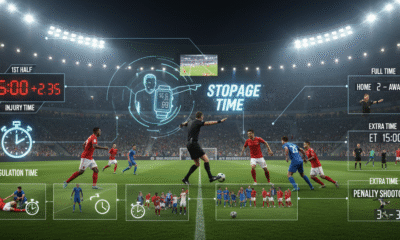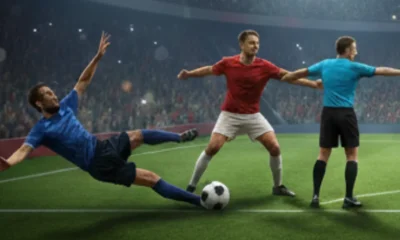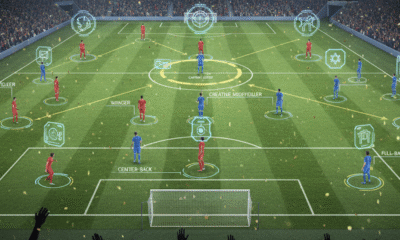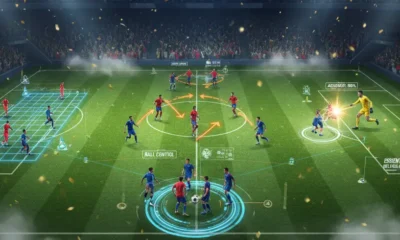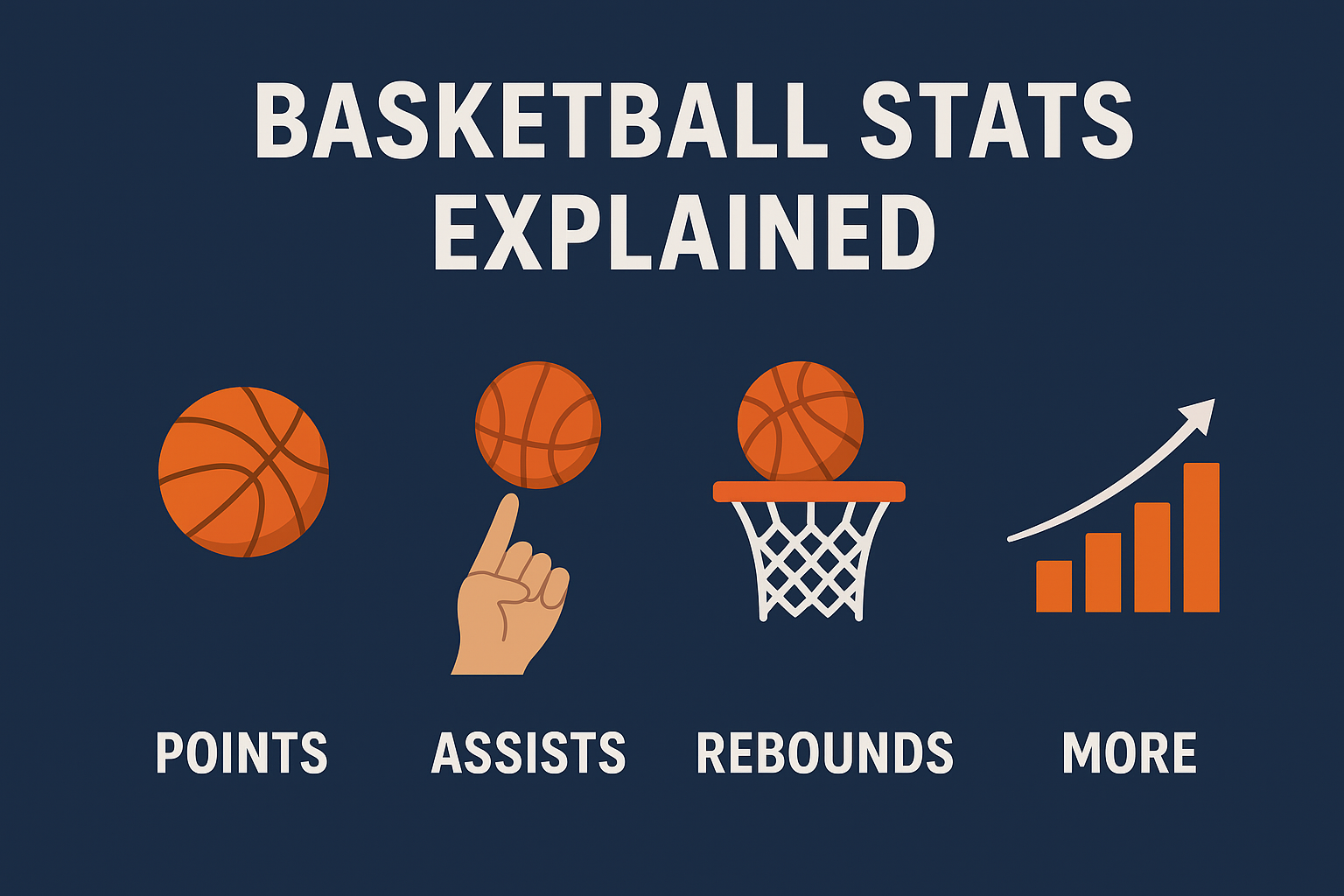
You are finally settled in to watch a football match. That means soccer if you are in North America. You are ready for action. Players fly across the pitch. The ball zips around. Then the whistle blows. The commentator sighs, “That’s a clear offside.” He sounds like it’s the most obvious thing in the world. Someone hits the turf. Out comes a yellow card. You nod, pretending you understand.
But do you?
If soccer seems to have its own secret vocabulary, you are not wrong. The sport looks simple. Kick the ball. Score the goal. It has many quirks and specific terms. Let’s make sense of it all. Soon, you will be yelling “Handball!” with confidence.
Soccer The Rule That Trips Everyone: Offside
Let’s start with the rule that confuses many fans.
Offside is not that complicated. It needs a mental picture. Imagine you are an attacker. You linger near the goal. At the exact moment your teammate passes the ball to you, fewer than two defenders stand between you and the goal line. This usually means the last outfield player and the goalkeeper. You are offside.
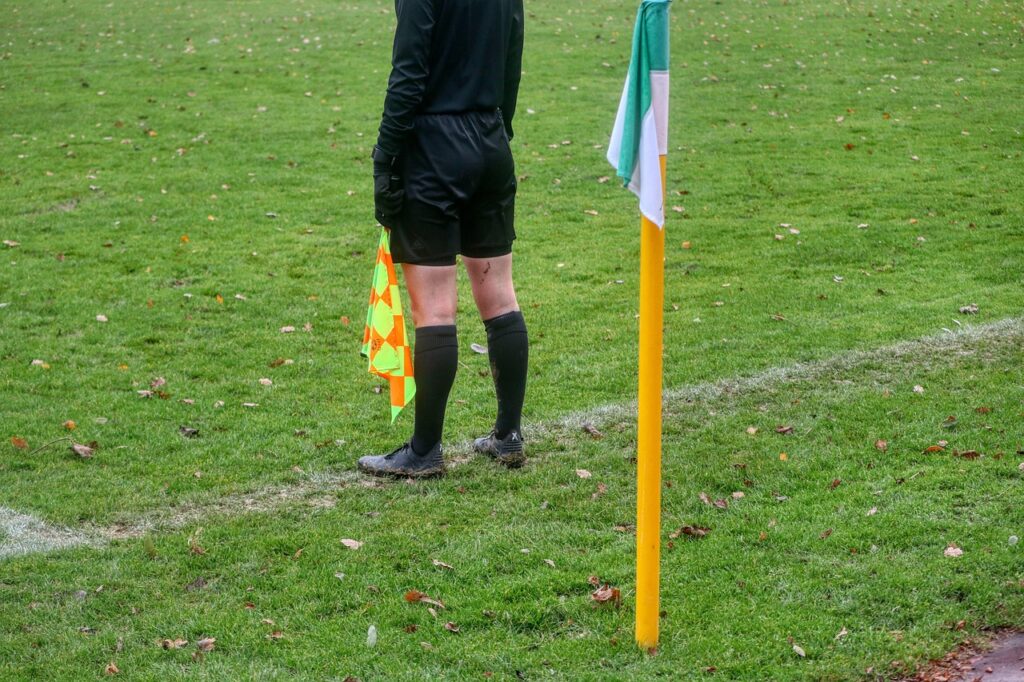
This rule matters. Without it, forwards could just stand by the goal. They would wait for a pass. This goes against the spirit of the game. It aims to keep play fair and flowing. The rule can feel technical in fast motion.
Some exceptions exist. You are not offside if the ball comes to you directly from a goal kick, a throw-in, or a corner kick. These are loopholes where the rule steps aside.
Referees call offside in real time. This is not easy. Fans, commentators, and players still argue about it. Even with VAR and slow-motion replays, arguments continue. If offside confused you before, you are not alone.
Cards: The Referee’s Toolkit
Yellow cards and red cards are soccer’s warnings and ejections.
A yellow card means “Hey, stop that.” You get a yellow for various actions:
- Time-wasting. Yes, this is a rule.
- Reckless tackles. These are careless but not dangerous.
- Arguing with the ref. This rarely helps your cause.
- Trying to cheat. Faking an injury or a foul is an example.
Two yellows equal a red card. This means you are out. Your team plays with 10 players instead of 11. This is a big disadvantage.
Red cards are for serious offenses. These include violent behavior or dangerous tackles. Denying a goal-scoring chance also earns a red card. This means tripping someone from behind who is about to score. Using wildly inappropriate language also earns a red card. It’s about attitude too.
Then there is the green card. This is positive. It is rare. Only some leagues use it. It rewards honesty or good sportsmanship. A player might tell the ref, “Actually, that was a foul on me.” This shows good sportsmanship.
Fouls: The Gray Area
A foul is any unfair action by a player. Pushing, tripping, pulling a jersey, or elbowing are examples.
Some fouls are clear. Others are borderline. The referee must read intent, timing, and impact in real time. They do not always get it right.
Handball is common. It is not just the ball hitting your hand. It is more about whether the arm was in an unnatural position. Was the arm out wide? Did the player try to block a pass on purpose? This is subjective. Controversial calls happen often.
Tackles are fair. You must get the ball cleanly. If you go in too hard or mistime it, you get a foul or a card.
Slide tackles look dramatic. When clean, they are beautiful. If a player goes in studs-up and misses the ball, a bold move can become a red card.
How Play Restarts: Kicks Explained
The game resumes with one of several kicks after a foul or stoppage.
Free Kick: This restarts play after most fouls. The fouled team kicks from the spot where the foul happened.
Direct Free Kick: You can shoot directly at goal. Most fouls involving contact, such as tripping or handballs, lead to these.
Indirect Free Kick: You cannot shoot directly at goal. The ball must touch another player first. These kicks are for less severe fouls, like obstruction or dangerous play.
Penalty Kick (PK): This is a big one. It is awarded when a foul happens inside the defending team’s penalty box. The ball is 12 yards from the goal. It is one-on-one: attacker versus goalkeeper. It is almost a guaranteed goal. These moments decide games and championships.
Goal Kick: This happens when the attacking team kicks the ball over the opponent’s goal line but not into the net. The defending team restarts play from their small goal area box.
Corner Kick: If the defending team kicks the ball over their own goal line, the attacking team gets a corner. These offer prime scoring chances. Tall players who head the ball well can score from these kicks.
What Happens After the Whistle? Match Outcomes & Betting Terms

Let’s say the game ends 2–2. That is a draw. In regular league play, both teams get one point. No overtime happens unless it is a knockout match.
For betting, you might see these terms:
3-Way Moneyline: You bet on one of three outcomes. Team A wins, Team B wins, or it is a draw. If you pick wrong, you lose the bet.
Draw No Bet (DNB): This is safer. If your team wins, you win. If it is a draw, you get your money back. You do not win, but you do not lose. This reduces your risk.
Double Chance: This is for cautious bettors. You bet on two possible outcomes with one wager. For example, “Team A or Draw.” This gives you a higher win chance. The payout will be lower.
Some people enjoy the strategy behind these bets. Others want an excuse to yell louder at the TV.
League Structure and Game Time Stuff
These terms cover league structure and match time.
Relegation is a brutal but thrilling part of many soccer leagues. This happens outside North America. If a team finishes near the bottom of the standings, they drop to a lower division next season. The best teams from the lower league get promoted up. This keeps every game meaningful.
Stoppage time (also called injury time) adds at the end of each half. It makes up for delays. These include injuries, substitutions, or time-wasting. If you see a goal scored in the 90+6th minute, that is stoppage time. It is not overtime. The ref adds back minutes that were lost.
Extra time is different. It only happens in knockout matches. If the game is tied after 90 minutes plus stoppage time, teams play two additional 15-minute halves. If still tied, a penalty shootout usually follows. This is drama in five shots per team.
Aggregate scoring applies to two-legged ties. Teams play each other twice, once at each team’s home stadium. The scores from both matches combine. The team with more total goals wins. If tied, away goals sometimes act as a tiebreaker. This rule has phased out in some competitions.
This is your toolkit. You do not need to memorize rulebook jargon or formations. Knowing what a “clear offside” means makes watching more enjoyable.
Next time you watch, and someone complains about a “soft penalty,” you might just nod for real. You might also ask the right questions.

